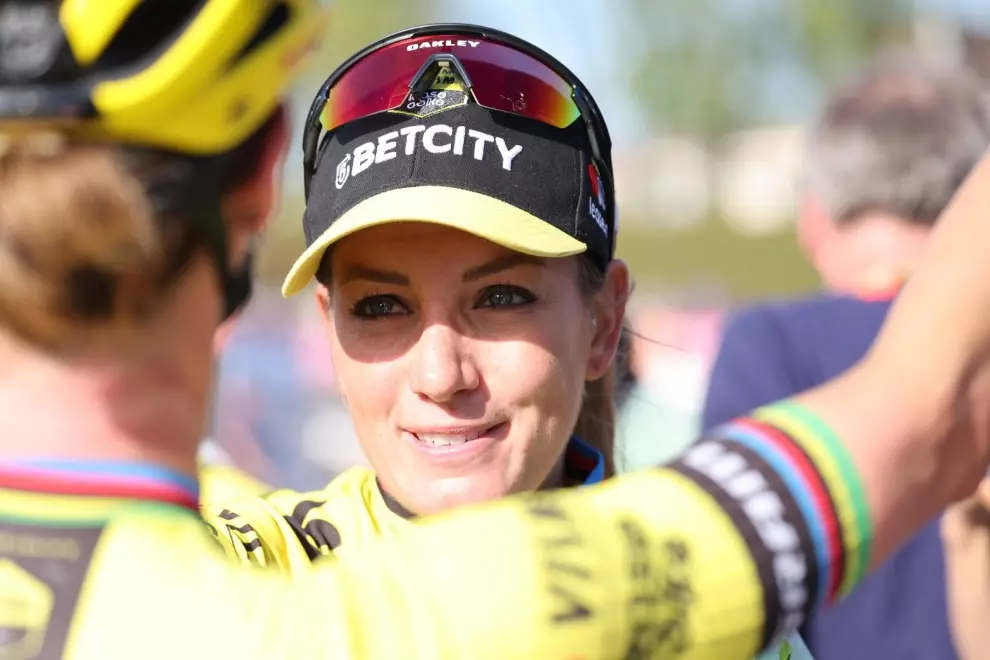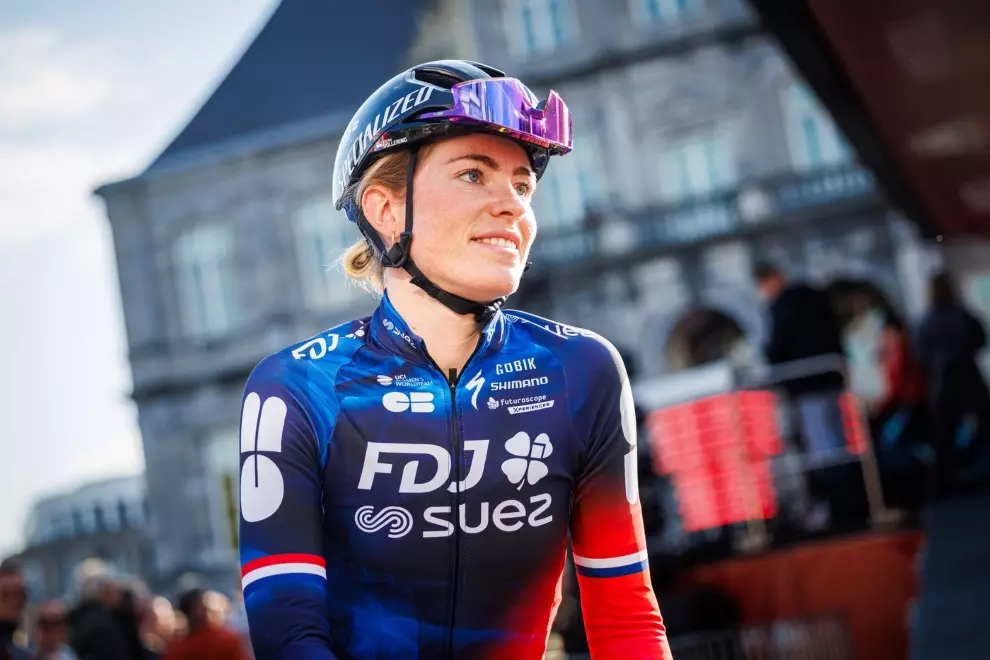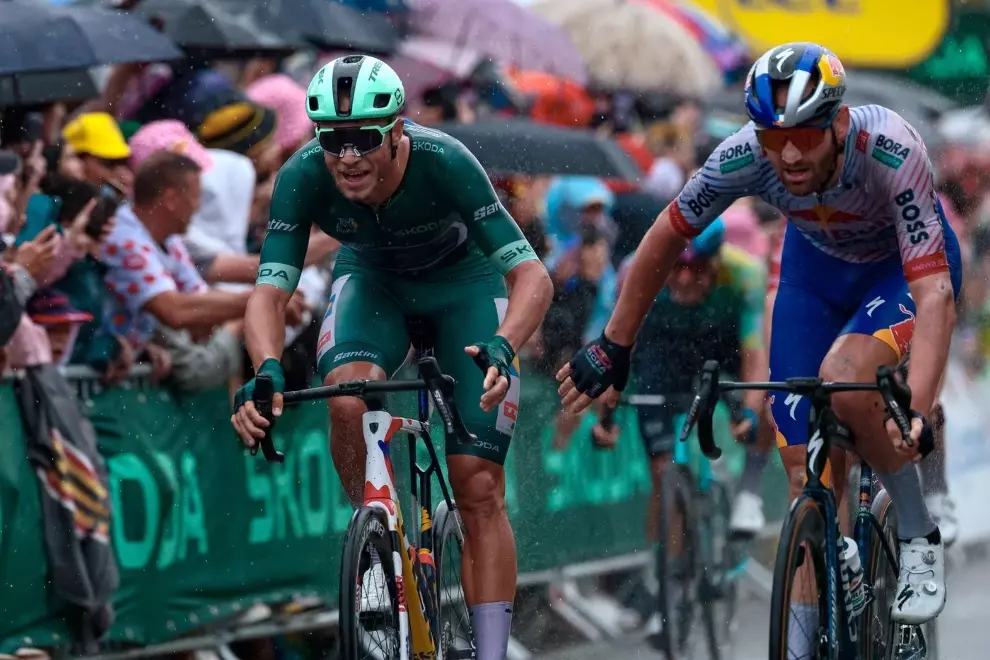To get there, the sprinter needs to deploy high-intensity efforts along the route, with some of them occurring around the so-called ‘lactate threshold’. If the race happens to be the Tour de France, for example, the sprinter needs to survive arduous climbs and recover from them over a three-week period. They have to survive today to sprint tomorrow.
A sprint consists of three phases: positioning, acceleration, and the final top-end sprint. If you’re out of position, you can’t win. This is especially important for the last mile of the stage. Rapid acceleration at the right time, especially that ‘first step,’ can give you a lead of one or two bike lengths at the crucial time, and deprive your rivals of using your slipstream. Developing a fast final sprint is all about continuing the acceleration. Most riders need to train themselves to apply power correctly, which is usually an issue of cadence rather than torque.

It’s important to develop strength and force in the off- and early-base seasons, both in the gym and on the bike, with the focus on torque and power. Part of the road training consists of sprinting in a lighter gear so you can accelerate with relative ease. This is a crucial part of learning to extend the acceleration throughout the sprint. On the road, the focus should be on the increasing leg speed while increasing torque for improved performance.
The best sprinters will naturally train to win the biggest prizes and in road racing and there is probably no bigger prize for a sprinter than to win a stage or two at the Tour de France. Winning the Tour’s points classification title is obviously the ultimate goal, but Slovak rider Peter Sagan has shown, by winning the green jersey six times in the past seven years, that a gifted racer who sacrifices a bit of speed in favour of endurance and moderate climbing ability will beat pure sprinters for the title most of the time.
A sprinter training for the Tour de France will begin in January, with a specific lead-out work, but without approaching the physical stress levels of the actual racing. In February, he may enter a stage race to build up aerobic fitness and to work on getting the ‘sprint train’ right in a race setting.

March and April will see the sprinter setting objectives in the Spring classics, such as the Milan-San Remo, and then carefully pick among the Ardennes classics, staying away from races involving long stretches of cobblestone to avoid injury but looking at a race like La Flèche Wallonne to build the climbing chops. In May, the sprinter may want to race at an altitude and June may see him do another stage race for fitness and to refine sprint train performance before the Tour begins.
More specifically, Australian Team Sunweb’s rider Michael Matthews said that a high-altitude training camp helped with getting him in shape for the Tour. “Intensive blocks and sprint training are specifically good for me to make sure I am explosive and can make it happen when I need to,” he explained. To improve speed, he advises sprinters to train in blocks, “so that your body gets used to suffering, but also to recovering quickly.”
Mark Cavendish has won 30 individual Tour de France stages and one points classification title. Among the training methods he has used over the years is the motor-pacing on the road and on the track, as when he trained with the British team’s pursuit squad for the 2016 Tour after two years during which he won only one Tour stage and none in the Giro d’Italia. In the 2016 Tour, Cavendish won three of the first six stages and four overall.

Training with track racers, former teammate Rob Hayles told Cycling Weekly, was responsible for Cavendish’s impressive return to form. “They’ll do over-distance efforts, maybe five kilometres instead of four, on under-geared bikes to improve their leg speed,” he explained. “There are also over-paced [faster than the likely speeds over four kilometres], over-geared intervals they do to get them pushing huge gears – Cav would probably use a 110- or 112-inch gear for those, as opposed to the 106- or 108-inch ones in competition on the track. Again, that’s about getting the legs moving, dealing with the gear.”
Motor-pacing on the track can be done at a higher intensity than on the road, Hayles said. “[It] therefore gets the rider’s cadence higher because of the logistical difficulties of doing it on roads. All this adds up to a good amount of recruitment – not just for the legs, but the back, glutes, arms, shoulders. You become stronger in so many areas.”
But perhaps the most difficult part of a sprinter’s training is preparing the proper mindset. According to road cycling coach Tim Cusick: “Sprinting is a chaotic, explosive experience that challenges you to go to physical extremes while navigating a potential minefield of safety issues. Sprinters need to have the courage to win and [apply] full mental commitment to the sprint.”




